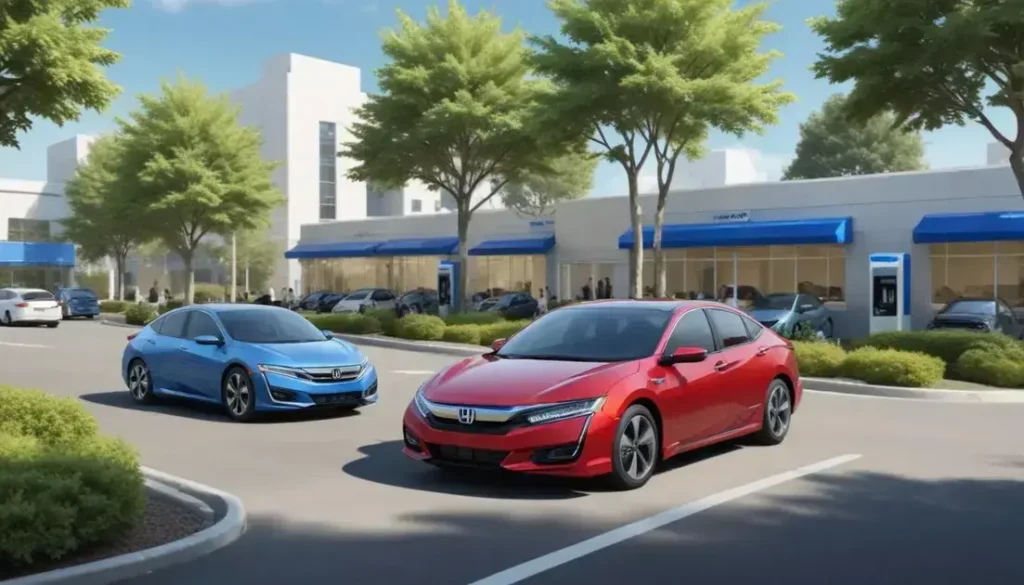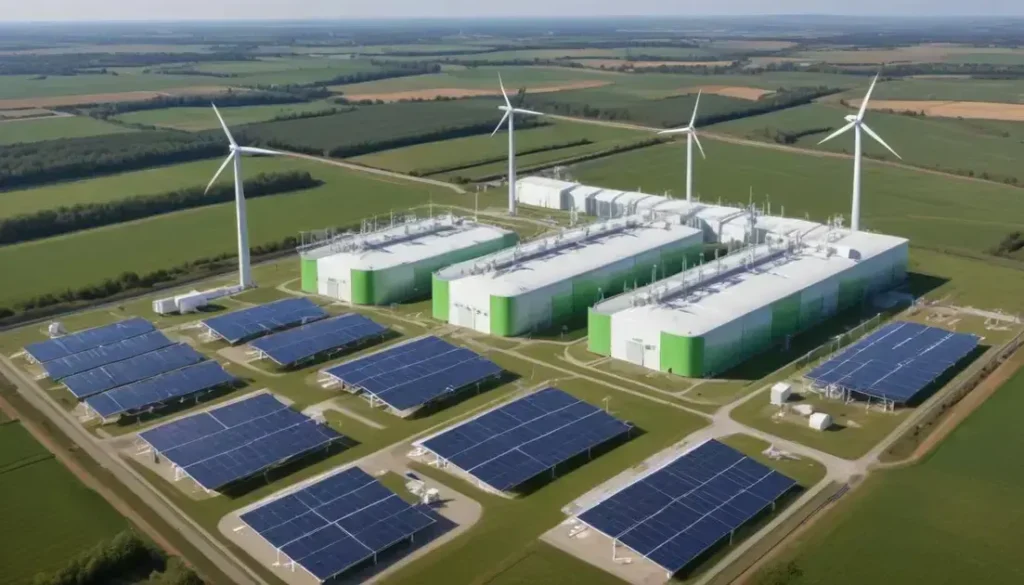Sustainability in the automotive industry focuses on reducing emissions, enhancing energy efficiency, and implementing renewable energy solutions to create eco-friendly vehicles and practices, ultimately driving a shift towards a greener future in transportation.
Welcome to the discussion on sustainability as Lamborghini unveils its first report. Let’s explore how these changes impact global dynamics and what businesses need to adapt.
Introduction to Lamborghini’s Sustainability Report
A Lamborghini’s sustainability report marks a pivotal step towards environmental responsibility in the luxury automotive sector. This report highlights the company’s commitment to reducing its carbon footprint while maintaining its legacy of high-performance vehicles. By transitioning to hybrid models, Lamborghini aims to blend sustainability with powerful performance, ensuring that the brand remains at the forefront of innovation.
The report outlines specific targets for emissions reduction and energy efficiency, urging suppliers to adopt sustainable practices as well. Lamborghini’s approach includes using eco-friendly materials and renewable energy sources in their production processes. These initiatives promise not just compliance with regulations, but a proactive stance in the face of climate change.
As global awareness of environmental issues rises, Lamborghini’s efforts resonate with both consumers and businesses alike. The luxury carmaker aligns its goals with broader sustainability trends, aiming to attract environmentally conscious customers. This alignment demonstrates their understanding that the future of luxury lies in sustainable practices and transparency. As Indian businesses look to adapt to these shifts, they can find valuable insights within Lamborghini’s report regarding best practices for integrating sustainability into their operations.
Overview of Hybrid Models and their Significance
Hybrid models represent a significant leap in automotive technology, combining the best of both internal combustion engines and electric propulsion systems. This integration not only enhances performance but also drastically reduces emissions, aligning with global sustainability goals. Manufacturers like Lamborghini are investing heavily in these technologies to produce vehicles that offer both speed and environmental responsibility.
One major advantage of hybrid models is their ability to optimize fuel efficiency. By utilizing electric power during low-speed driving or idle periods, these vehicles can significantly decrease fuel consumption. This approach not only benefits the environment but also translates to more cost-effective driving for consumers.
Additionally, the development of hybrid technology is paving the way for future innovations in the automotive industry. As battery technology continues to advance, hybrid vehicles are set to become more efficient and powerful, surpassing traditional vehicles in performance while maintaining low emissions. This shift is crucial for companies aiming to meet stricter environmental regulations and cater to the evolving preferences of consumers who prioritize sustainability.
The significance of hybrid models extends beyond performance; they play a vital role in shaping the future of the automotive industry, encouraging manufacturers to rethink their designs and production processes in favor of sustainability.
Impacts of Rising GHG Emissions
The rising levels of greenhouse gas (GHG) emissions pose a significant challenge for the global automotive industry. These emissions contribute not only to climate change but also to deteriorating air quality in urban areas, impacting public health. Luxury brands like Lamborghini are under increasing pressure to address these concerns, as consumers become more environmentally conscious.
One of the main impacts of rising GHG emissions is the greater need for regulatory compliance. Governments around the world are implementing stricter emission standards, requiring manufacturers to innovate and adapt quickly. Failure to comply with these regulations can lead to hefty fines and reputational damage, affecting sales and brand loyalty.
Moreover, the economic implications of high GHG emissions can be profound. As fossil fuel prices fluctuate and the demand for sustainable alternatives grows, companies must reassess their approaches to production and fuel efficiency. In this competitive landscape, brands that invest in sustainable technologies and practices are likely to gain a significant market edge.
Ultimately, addressing the impacts of rising GHG emissions requires a multi-faceted approach. Automakers must not only innovate in vehicle design but also engage in initiatives that promote sustainable practices throughout their supply chains. This holistic strategy is key to building a greener future for the automotive industry.
Energy Consumption Insights
Understanding energy consumption is crucial for companies aiming to achieve sustainability goals. The automotive industry is a significant contributor to global energy use, making it imperative for brands like Lamborghini to analyze their energy metrics closely. By focusing on energy efficiency, manufacturers can effectively reduce their overall environmental impact.
One significant insight is the shift towards renewable energy sources. Many automotive companies are now harnessing solar and wind energy to power their manufacturing facilities. This transition not only lowers GHG emissions but also reduces dependency on fossil fuels, creating a more sustainable production process.
Additionally, advancements in battery technology have revolutionized energy consumption in hybrid and electric vehicles. These innovations help optimize energy usage, enhancing the efficiency of electric power during operation. As this technology evolves, it presents opportunities for significant energy savings.
Moreover, manufacturers are increasingly implementing energy management systems that allow for real-time monitoring of energy consumption. Such systems enable companies to identify inefficiencies and make necessary adjustments quickly. This proactive approach is essential for continuous improvement in energy efficiency, ultimately leading to a positive impact on bottom lines and the environment.
Transition to Self-Generated Energy
The transition to self-generated energy is transforming the automotive manufacturing landscape. Brands like Lamborghini are at the forefront of this shift, recognizing the need to reduce their reliance on conventional energy sources. By implementing renewable energy solutions, manufacturers can achieve greater sustainability while also lowering operational costs.
One effective strategy involves the adoption of solar energy systems. By installing solar panels on factory roofs, companies can harness sunlight to power their operations. This not only decreases energy costs but also minimizes the carbon footprint associated with production processes.
In addition to solar, other renewable sources such as wind energy are being explored. Wind turbines can provide significant energy savings and are often used in conjunction with solar systems to ensure a steady energy supply throughout the year. These initiatives reflect a commitment to a more sustainable future and can improve the overall image of luxury brands in the eyes of environmentally conscious consumers.
The transition to self-generated energy also supports energy independence. By producing their own clean energy, manufacturers can better manage fluctuating energy prices and reduce exposure to market volatility. This strategic approach not only enhances profitability but also contributes to a wider goal of sustainability across the automotive industry.
Strategic Supplier Selection Process
The strategic supplier selection process is crucial for automotive manufacturers, particularly in achieving sustainability goals. As companies like Lamborghini aim to enhance their environmental footprint, selecting suppliers that share these values becomes essential. This process involves thorough evaluations of potential suppliers based on their sustainability practices, innovation capabilities, and overall alignment with the brand’s mission.
One key aspect of this selection process is assessing a supplier’s commitment to environmentally friendly practices. This includes examining their energy use, waste management systems, and sourcing of raw materials. Suppliers that prioritize sustainability not only contribute to reducing the overall carbon footprint but also enhance the brand’s reputation among eco-conscious consumers.
Furthermore, incorporating diversity and resilience into the supplier base can mitigate risks and foster innovation. A diverse range of suppliers encourages different perspectives and ideas, leading to improved problem-solving and creative solutions. This is particularly important in response to global challenges such as climate change and resource scarcity.
Lastly, an effective supplier selection process often includes continuous assessment and relationship management. By fostering long-term partnerships with suppliers, manufacturers can ensure ongoing compliance with sustainability standards and encourage continuous improvement in practices. This collaborative approach ultimately supports the overarching goal of a greener automotive industry.
Sustainability-focused Procurement Practices
Sustainability-focused procurement practices are essential for modern automotive manufacturers looking to achieve their environmental goals. By prioritizing ethical sourcing and environmentally friendly materials, companies like Lamborghini can minimize their ecological footprint while enhancing their brand image.
One significant aspect of sustainable procurement is the evaluation of suppliers based on their environmental practices. This includes assessing how suppliers manage resources, their waste reduction strategies, and the sustainability of the materials they provide. Aligning with suppliers who prioritize these factors ensures a more sustainable supply chain.
Moreover, incorporating circular economy principles into procurement practices can further aid sustainability. This involves sourcing materials that can be recycled or re-used, thus reducing waste and conserving resources. For instance, manufacturers can choose recycled metals or sustainably sourced materials in their production processes.
A key component of these practices is transparency in the supply chain. Companies must maintain clear communication with their suppliers regarding sustainability goals and expectations. This collaborative approach encourages innovation and improvements in sustainable practices throughout the supply chain, ultimately leading to greater efficiency and reduced environmental impact. By adopting sustainability-focused procurement practices, the automotive industry can significantly contribute to a greener future.
Innovations in Emissions Reduction
Innovations in emissions reduction are transforming the automotive industry, making it possible for manufacturers to meet stringent environmental regulations while maintaining performance. Companies like Lamborghini are investing heavily in cutting-edge technologies that not only minimize emissions but also enhance the driving experience.
One significant innovation is in engine efficiency. Modern engines are being designed with precision to maximize fuel combustion, thereby reducing harmful by-products. Techniques such as turbocharging and direct injection have proven effective in lowering emissions while increasing power output.
Another notable advancement is the integration of advanced exhaust after-treatment systems. These systems effectively capture and neutralize pollutants before they are released into the atmosphere. Technologies such as selective catalytic reduction (SCR) and particulate filters are examples of how emissions can be significantly cut down during the combustion process.
Furthermore, the development of hybrid and electric vehicles is paving the way for a cleaner automotive future. These vehicles utilize alternative energy sources and zero-emission powertrains to eliminate tailpipe emissions altogether. As battery technology continues to advance, electric vehicles are becoming more viable for mainstream consumers, making a substantial impact on reducing overall emissions in the transportation sector.
Future Plans for Sustainable Mobility
The future plans for sustainable mobility are focused on creating a transportation ecosystem that is not only efficient but also environmentally friendly. Automotive leaders, including Lamborghini, are prioritizing innovations that will transform how we think about mobility in urban settings and beyond.
One of the key aspects of these future plans is the development of electric vehicles (EVs). These vehicles are set to become a cornerstone of sustainable transportation, as they produce zero emissions during operation. Advances in battery technology are making EVs more accessible and efficient, allowing for longer ranges and shorter charging times.
Additionally, integrating smart technology into vehicles and infrastructure is essential for enhancing the sustainability of mobility. Features such as real-time traffic management, car-sharing platforms, and autonomous driving systems contribute to reduced congestion and lower emissions. These innovations ensure that urban areas can accommodate more vehicles without overwhelming the existing infrastructure.
Moreover, partnerships with governments and other sectors will facilitate the transition to sustainable mobility. Investments in public transportation and cycling infrastructure can complement the shift towards EVs, creating a more holistic approach to reducing carbon footprints. By addressing these various elements, the automotive industry is paving the way for a cleaner, more sustainable future in transportation.
Conclusion on Sustainability Goals
While this article focuses on the strategies and innovations in the automotive industry, achieving sustainability goals requires a collective effort from all stakeholders. From manufacturers to consumers, everyone plays a vital role in fostering a more sustainable future. A shift towards eco-friendly practices is not just beneficial for the environment but also for business in today’s market.
Automakers need to commit to integrating sustainable technologies and practices into their operations. This includes investing in research and development to improve energy efficiency and reduce emissions. Initiatives like adopting renewable energy sources and engaging in sustainable procurement practices are crucial steps in this journey.
Additionally, consumers must also contribute by choosing sustainable options. Supporting brands that prioritize sustainability not only drives change but also sets a precedent for other companies to follow. Moreover, public awareness and education on the importance of sustainability can significantly impact purchasing behaviors.
Looking forward, collaboration within the industry and between various sectors is essential. By sharing knowledge and resources, the journey towards sustainability can be accelerated. The automotive industry is uniquely positioned to lead the charge as it embraces innovative solutions that benefit both the planet and profitability, proving that sustainability and success can go hand in hand.
In Conclusion: The Future of Sustainability in the Automotive Industry
Sustainability is becoming increasingly important in the automotive sector. Manufacturers like Lamborghini are leading the way by adopting eco-friendly practices and innovative technologies. By focusing on reducing emissions and optimizing energy consumption, the industry is moving towards a greener future.
Collaboration among all stakeholders, including manufacturers, suppliers, and consumers, is crucial for achieving sustainability goals. Everyone has a role to play in supporting brands that prioritize the environment. This collective action can create a significant impact.
As we advance, the integration of electric vehicles, renewable energy, and smart technologies will shape the future of mobility. The journey towards sustainability is not just a trend; it’s essential for the health of our planet. By embracing these changes, the automotive industry can thrive while also protecting the environment.
Let us all work together to ensure a sustainable future, where innovation and environmental responsibility go hand in hand.
Frequently Asked Questions
What are the primary sustainability goals in the automotive industry?
The primary sustainability goals include reducing greenhouse gas emissions, improving energy efficiency, and promoting the use of renewable energy sources.
How can electric vehicles contribute to sustainability?
Electric vehicles produce zero tailpipe emissions, which significantly reduces air pollution and reliance on fossil fuels, making them a key component of sustainable transportation.
What innovations are being implemented to reduce emissions?
Innovations include advanced engine technologies, exhaust after-treatment systems, and the integration of hybrid and electric vehicles into production lineups.
Why is collaboration important in achieving sustainability?
Collaboration among manufacturers, suppliers, and consumers is essential to share knowledge, resources, and best practices, enabling a collective effort towards sustainability goals.
How can consumers support sustainability initiatives in the automotive industry?
Consumers can support sustainability by choosing to buy eco-friendly vehicles, advocating for sustainable practices, and encouraging brands to prioritize environmental responsibility.
What role does renewable energy play in automotive manufacturing?
Renewable energy plays a crucial role by powering manufacturing processes sustainably, reducing the overall carbon footprint, and promoting energy independence for automotive companies.


